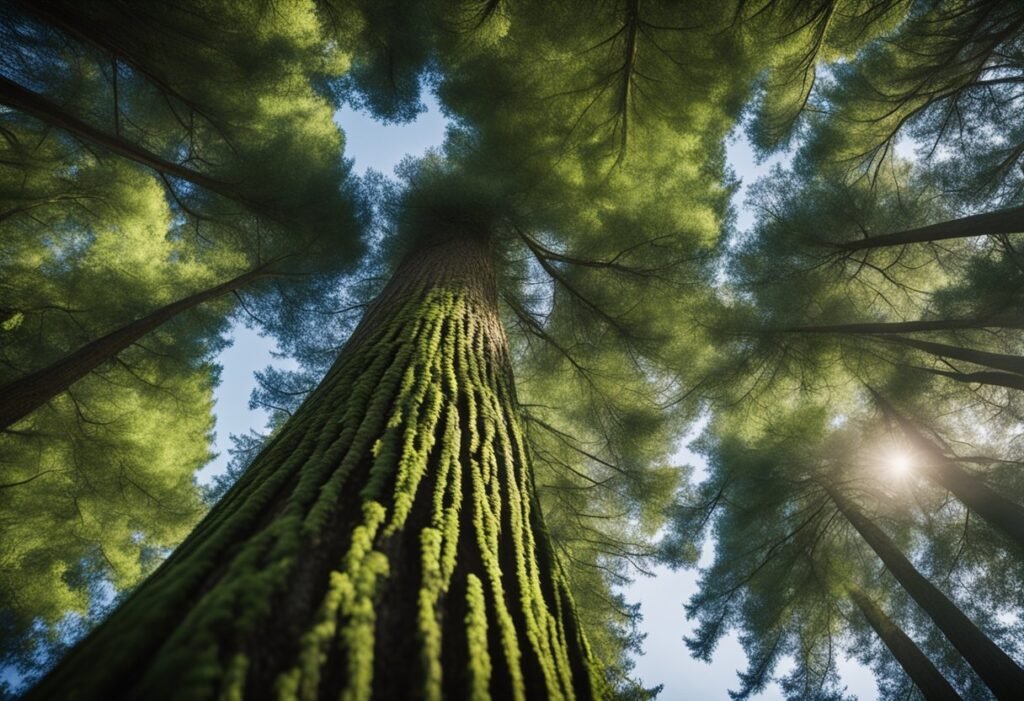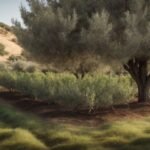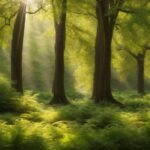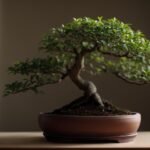Have you ever wondered what the official state tree of Washington is? In this article, we will explore the history, characteristics, uses, threats, and preservation efforts surrounding the Washington State Tree. From its appearance and environmental adaptations to its cultural significance and the challenges it faces from deforestation, pests, and climate change, we will delve into all aspects of this iconic tree. Join us as we discover how we can protect and preserve this vital part of Washington’s natural heritage.
What Is the Washington State Tree?
The Washington State Tree, the Western Hemlock (Tsuga heterophylla), holds a significant place in the Pacific Northwest as the designated state symbol, emblemizing the rich botanical heritage of Washington’s forests.
Its selection as the state tree is not only a recognition of its stunning beauty and towering presence in the state’s natural landscapes but also a nod to its economic importance. The Western Hemlock plays a crucial role in representing Washington’s forestry industry, wherein it is prized for its high-quality timber used in construction, furniture-making, and paper production. This tree holds cultural significance among Indigenous communities in the region, who have long valued its medicinal properties and spiritual connections to the land.
What Is the History of the Washington State Tree?
The history of the Washington State Tree dates back to its designation as a state symbol through legislative action, reflecting the state’s recognition of the importance of preserving its arboreal heritage.
The selection of the Western Hemlock as the state tree of Washington was a pivotal moment that highlighted the state’s commitment to honoring its natural resources. This decision was not only symbolic but also rooted in the rich ecological history of the region. By choosing the Western Hemlock, Washington acknowledged the vital role that forests play in the state’s economy, culture, and environmental sustainability. Over time, this iconic tree has become emblematic of Washington’s lush landscapes and its dedication to environmental stewardship.
What Are the Characteristics of the Washington State Tree?
The Washington State Tree, the Western Hemlock, showcases classic coniferous traits as an evergreen species with lush foliage, distinct from other conifers like the Douglas-fir and cedar prevalent in the Washington forests.
Its physical characteristics include a pyramidal shape with drooping branches that form a graceful silhouette. The Western Hemlock’s needles are small, flat, and dark green, arranged in a distinctive two-ranked pattern along the stems. Unlike the sharp needles of a Douglas-fir, the Western Hemlock’s needles are softer to the touch. Another distinguishing feature is its small, round cones that are purplish-brown when immature and turn woody as they mature, adding to its unique appearance.
Appearance
The appearance of the Washington State Tree, the Western Hemlock, is characterized by its lush green foliage and arboreal stature, adding to the rich flora of Washington’s botanical landscape.
Its botanical features include delicate needles that grow in flattened sprays, giving the tree a feathery appearance. The Western Hemlock’s branches droop gracefully, creating a picturesque silhouette against the backdrop of Washington’s forests. These trees can soar to impressive heights, with their trunks often covered in a rich, dark bark that contrasts beautifully with the vibrant greenery of their needles. Their presence in Washington’s forests not only enhances the visual appeal but also contributes to the ecological diversity of the region.
Growth and Lifespan
The growth and lifespan of the Washington State Tree, the Western Hemlock, are intertwined with the sustainable forest management practices in Washington forests, emphasizing the importance of tree health and forest stewardship.
This coniferous tree species is known for its slow growth rate, typical of long-lived species characteristic of old-growth forests. Western Hemlocks can live for several centuries, with some individuals reaching ages of over 800 years. Their role in forest ecology is vital, providing habitat for various wildlife species and contributing to the overall biodiversity of the ecosystem. In Washington forests, management strategies often focus on promoting the regeneration of Western Hemlock stands through selective logging and silvicultural practices designed to mimic natural disturbances.
Environmental Adaptations
The Washington State Tree, the Western Hemlock, showcases remarkable environmental adaptations that enhance its survival in diverse forest habitats, underlining the importance of tree care and biodiversity conservation.
These adaptations include its ability to thrive in moist environments and its resistance to diseases and pests, making it a key player in sustaining the ecological balance of forest ecosystems. The Western Hemlock’s dense foliage provides shade and shelter for various wildlife species, contributing to the overall health of the forest. Conservation efforts aimed at preserving tree diversity and promoting environmental awareness play a crucial role in ensuring the continued sustainability of this iconic tree species, highlighting the interconnectedness of all living organisms in the intricate web of nature.
What Are the Uses of the Washington State Tree?
The Washington State Tree, the Western Hemlock, serves diverse purposes in the forestry industry, contributing to timber production, sustaining woodlands, and supporting the lumber sector in Washington’s timberland regions.
This majestic coniferous tree is highly valued for its high-quality wood, which is widely used in the production of various timber products such as lumber, plywood, and paper. Due to its straight grain and resistance to decay, Western Hemlock is a preferred choice for construction materials and furniture.
Its presence also plays a vital role in ecosystem health, providing habitat for wildlife, stabilizing soil, and regulating water flow in Washington’s diverse landscapes. Forestry practices focused on sustainable management of Western Hemlock forests are crucial for maintaining the balance between economic benefits and environmental conservation.
Timber Production
The timber production from the Washington State Tree, the Western Hemlock, follows sustainable logging practices that prioritize forest management, ensuring the long-term viability of lumber resources in tree farms.
As part of sustainable forestry practices, the process begins with careful assessment of forest stands to determine optimal harvesting areas. Selective logging techniques are employed to minimize impact on surrounding ecosystems, allowing for natural regeneration to take place. Forest managers closely monitor tree growth and health, implementing silvicultural practices to enhance timber quality and quantity. By maintaining a balance between harvesting and replanting, tree farms sustainably produce high-quality lumber while preserving biodiversity and ecosystem integrity. This comprehensive approach underscores the importance of responsible forest management in securing the future availability of Western Hemlock timber.
Wildlife Habitat
The Washington State Tree, the Western Hemlock, plays a crucial role in providing habitat for wildlife, contributing to the ecosystem’s biodiversity and enhancing the forest canopy within Washington’s forest ecosystem.
By serving as a vital component of the forest ecosystem, the Western Hemlock offers shelter and food sources for various wildlife species. Its dense foliage and large branches create a protective environment for birds, small mammals, and insects, promoting a flourishing ecosystem. The tree canopy not only provides shade and moisture regulation but also supports a diverse range of plant and animal life, contributing to the overall health and sustainability of the forest habitat. The Western Hemlock‘s presence helps in maintaining balance within the ecosystem and is essential for wildlife conservation efforts.
Recreation
The Western Hemlock, as the Washington State Tree, contributes to outdoor recreation opportunities in state parks, promoting environmental education and awareness among visitors about the significance of forestry conservation.
Its towering presence along the trails provides shade and shelter for hikers and campers, creating a serene environment for various outdoor activities. The distinctive foliage and cones of the Western Hemlock serve as educational tools for park rangers to teach visitors about the diverse plant species that populate the forest. This interactive learning experience fosters a deeper connection with nature and encourages a sense of responsibility towards preserving the natural beauty of state parks.
Cultural Significance
The Western Hemlock, designated as the Washington State Tree, holds deep cultural significance, symbolizing the state’s rich heritage and natural beauty recognized through legislative actions.
Its designation as the state tree serves as a testament to the value Washington places on its natural resources and environmental conservation efforts. The Western Hemlock’s graceful appearance and longevity make it a fitting representation of the state’s enduring connection to its forests and landscapes. Through its symbolic presence, the tree embodies the spirit of preservation and the importance of safeguarding the state’s ecological diversity for future generations to appreciate and cherish.
What Are the Threats to the Washington State Tree?
The Washington State Tree, the Western Hemlock, faces threats from various sources, including logging activities, deforestation, disease outbreaks, pest infestations, and the adverse impacts of climate change on its ecosystem.
Logging practices pose a significant risk to the Western Hemlock as indiscriminate tree felling disrupts its natural habitat and reduces biodiversity. Deforestation further intensifies the pressure on these trees, leading to habitat fragmentation and loss. The tree is vulnerable to various diseases and pests, such as hemlock dwarf mistletoe and hemlock looper caterpillars, which can weaken its resilience. Climate change exacerbates these threats by altering temperature and precipitation patterns, creating conditions that are conducive for pests and diseases to thrive and impacting the overall health of the Western Hemlock population.
Logging and Deforestation
Logging and deforestation pose imminent risks to the Washington State Tree, the Western Hemlock, threatening its status as a crucial natural resource and necessitating sustainable forest management practices for preservation.
The Western Hemlock plays a critical role in the ecosystem by providing habitat for various wildlife species and contributing to the overall biodiversity of the region. Its timber resources are highly valued for construction and manufacturing purposes due to the wood’s strength and durability.
Unsustainable logging practices have led to habitat destruction, soil erosion, and loss of biodiversity. Implementing sustainable forest management strategies such as selective logging and reforestation can help maintain a balance between human needs and preserving the integrity of the forest ecosystem.
Disease and Pests
Disease and pest outbreaks jeopardize the health and longevity of the Washington State Tree, the Western Hemlock, underscoring the need for comprehensive tree care, protection, and preservation efforts.
The impact of these threats goes beyond aesthetics, affecting the overall ecosystem health and biodiversity. As such, it is crucial for land managers and forest owners to implement proactive measures to mitigate the risks and protect the Western Hemlock population. Tree health preservation strategies, such as regular monitoring for early detection of diseases and pests, appropriate pruning techniques, and maintaining optimal growing conditions are vital in sustaining the tree’s vitality. Promoting diverse species and natural predators can help in biological pest control, reducing the reliance on chemical treatments.”
Climate Change
Climate change poses a significant threat to the Washington State Tree, the Western Hemlock, disrupting forest ecology and necessitating scientific interventions in environmental protection to safeguard the tree’s ecosystem.
One of the key impacts of climate change on the Western Hemlock is the alteration of its habitat conditions. With rising temperatures and changing precipitation patterns, the Western Hemlock faces challenges in maintaining its ideal growth environment. These changes can lead to shifts in the forest ecosystem dynamics, affecting not only the tree itself but also the diverse plant and animal species that rely on its presence. Environmental science plays a crucial role in understanding these climate-related threats and implementing strategies to adapt and mitigate the impacts on the Western Hemlock and the broader forest ecosystem.
How Can We Protect and Preserve the Washington State Tree?
Protecting and preserving the Washington State Tree, the Western Hemlock, requires a multi-faceted approach encompassing conservation efforts, sustainable logging practices, and enhancing environmental awareness among the public.
One key strategy for safeguarding the Western Hemlock is implementing conservation initiatives that focus on preserving its natural habitat. By establishing protected areas and promoting reforestation projects, the biodiversity necessary for the hemlock’s survival can thrive. In addition, adopting sustainable logging methodologies, such as selective harvesting and tree planting programs, can help maintain a healthy balance between timber extraction and forest regeneration. Raising environmental awareness through educational campaigns, community engagement, and advocating for policies that prioritize forest conservation is crucial in ensuring a sustainable future for the Western Hemlock.
Conservation Efforts
Conservation efforts for the Washington State Tree, the Western Hemlock, involve tree planting, reforestation projects, and comprehensive tree conservation practices essential for maintaining forest stewardship and biodiversity.
Tree planting initiatives play a crucial role in replenishing the Western Hemlock population and restoring forest ecosystems. By strategically planting trees in deforested areas or areas affected by wildfires, conservationists can enhance forest resilience and promote habitat restoration for various wildlife species. Reforestation programs aim to recreate diverse and healthy forest environments, contributing to increased carbon sequestration and mitigation of climate change effects. These efforts not only support the longevity of the Western Hemlock but also foster a culture of sustainable forest management and ecological stewardship for future generations.
Sustainable Logging Practices
Implementing sustainable logging practices is crucial for the preservation of the Washington State Tree, the Western Hemlock, ensuring responsible timber extraction and maintaining effective forest management in Washington’s woodlands.
Sustainable logging practices not only help protect the natural habitat of the Western Hemlock but also contribute to the overall health of forests in the region. By utilizing responsible timber extraction methods that prioritize long-term forest health, loggers can ensure that the ecosystem remains balanced.
Sustainable forestry practices include selective harvesting, where only mature trees are cut down, leaving younger trees to continue growing. This approach promotes biodiversity and allows the forest to naturally regenerate, safeguarding the future of the Western Hemlock and its surrounding environment.
Public Education and Awareness
Promoting public education and awareness about the Washington State Tree, the Western Hemlock, is vital for fostering environmental consciousness, enhancing forest ecology understanding, and encouraging sustainable practices among communities.
By engaging in education campaigns, individuals can develop a deeper appreciation for the interconnectedness of ecosystems and the delicate balance required for environmental sustainability. Through ecological understanding, communities can make informed decisions about preserving natural resources and reducing their carbon footprint.
It is crucial to empower people with knowledge about the Western Hemlock’s significance in maintaining biodiversity and its role in forest health. By raising awareness and promoting eco-conscious behaviors, we can pave the way for a more sustainable future for both our environment and our communities.
Frequently Asked Questions
What is the official state tree of Washington State?
The official state tree of Washington State is the Western Hemlock.
Why was the Western Hemlock chosen as the state tree of Washington?
The Western Hemlock was chosen as the state tree of Washington due to its prevalence in the state’s forests and its importance in the state’s timber industry.
Can the Western Hemlock be found in other states besides Washington?
Yes, the Western Hemlock can also be found in other states in the Pacific Northwest such as Oregon and Alaska.
What makes the Western Hemlock unique as a tree?
The Western Hemlock is unique in its ability to thrive in a wide range of environmental conditions, from wet and cool coastal areas to dry and hot inland regions.
Is the Western Hemlock a popular tree for landscaping in Washington State?
While the Western Hemlock is not commonly used for landscaping due to its large size, it is a popular choice for commercial forests and reforestation efforts in the state.
Are there any interesting facts about the Western Hemlock?
The Western Hemlock is the largest species of hemlock in the world and can live for over 800 years.






